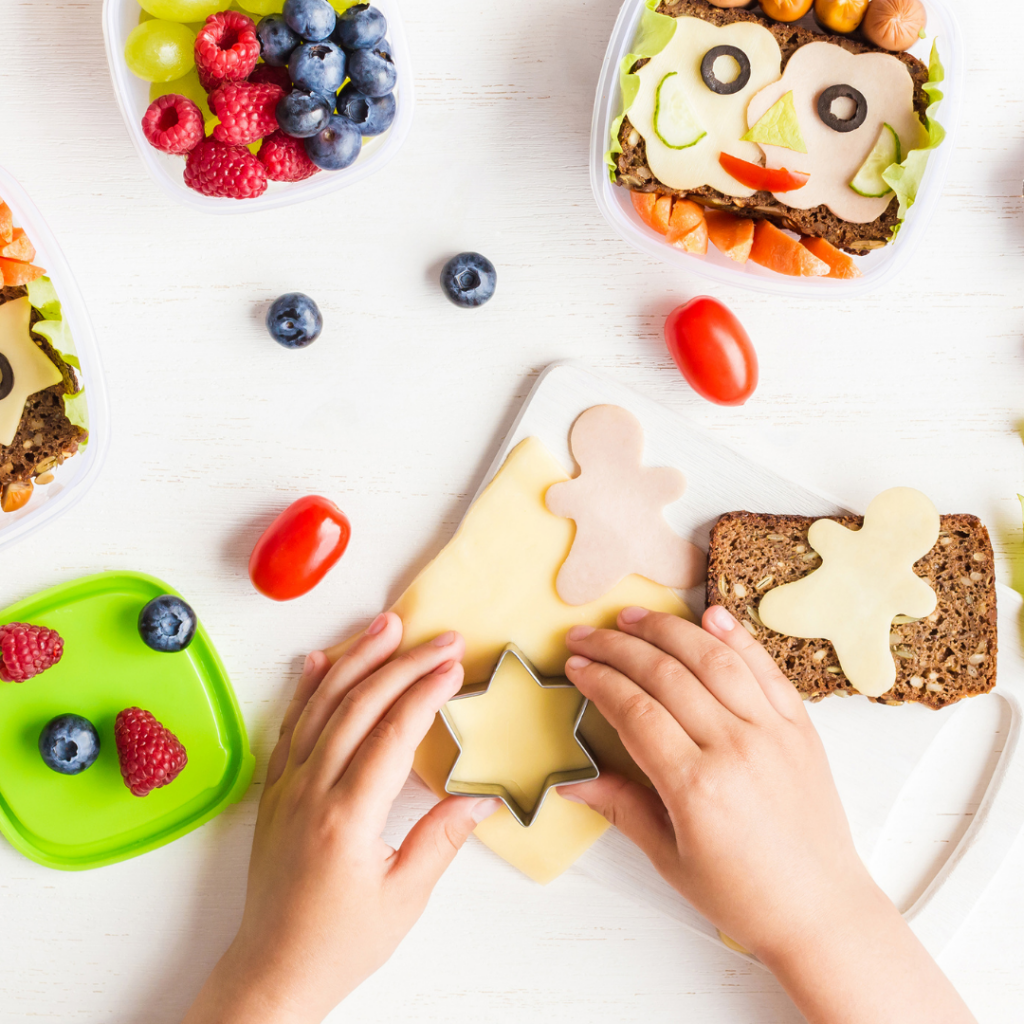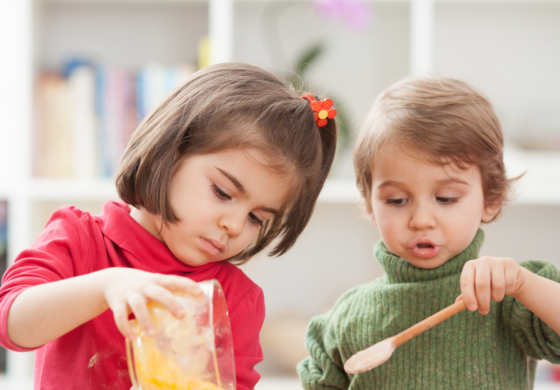Do you have a selective little eater? Does it feel impossible to get them to try new foods, and if you’re finally able to convince them to take a bite, do they have a STRONG opinion that they absolutely DO NOT (or will not) like it!?
If you’ve been around for a while, you may have heard from us before that to improve picky eating, it’s so important for your child to play with their food! If this is a new concept for you, let us tell you- it may sound unconventional, but we’ve found that playing with food is the BEST way to get your child to try new foods! Children learn through play, and they have SO MUCH to learn about new food. There is so much research that supports this idea too!

Hear us out– if you’re willing to try to incorporate more play into your feeding routine, we have faith that you’ll see an improvement in the amount and in the variety of foods that your child eats! Now, if you don’t even know where to start when it comes to playing with your food (it’s kind of against everything we were told growing up, isn’t it!?), we have some ideas below. As you start incorporating more food play with your kiddo, remember that it needs to take place in a low-stress environment. Keep in mind that not every meal is going to be perfect, and that’s okay. Sometimes we just need to relax, remove expectations, and PLAY!

Be Silly
This is especially true with little ones- making silly sounds and using simple words (“squish!” “crash!”) are great ways to engage with them. Put food above your lip like a mustache, put carrots behind your head like bunny ears, and pretend to paint your nails with yogurt! All of these are fun ways to get kiddos to engage with new foods without pressure to taste or eat them.
Your child will want to model what you do! If you play silly games, they’ll want to join in the fun. Play “tug of war” and have your child (or you!) chomp down a carrot with their molars and tug (gently). This will also help build oral-motor strength! Put a piece of food on your tongue, stick your tongue out, then pull it back in your mouth again, like peek-a-boo!
Use Kitchen Tools
Cookie cutters come in so many different shapes, sizes, and animals, and you’d be surprised how many kiddos are absolutely repulsed by regular sandwiches, but LOVE to eat elephant-shaped sandwiches! Cookie cutters can be used with anything (fruits, vegetables, quesadillas, sandwiches, meats), and they’re one of our favorite kitchen tools!
Food choppers are like magic to little ones. Don’t believe us? Try it! Little ones who won’t even get near carrots or broccoli think it’s the. coolest. thing. ever. to chop these veggies up. And suddenly, they’re touching these foods! That’s the first step, and it’ll just get better from there.
Our salad spinner is probably one of our most-used items in our kitchen, and it’s not hard to guess why! What other kitchen tool makes food spin around in circles super fast?! You can pretend that food goes swimming in the salad spinner (use a fish-shaped cookie cutter to make all sorts of foods go swimming!), and each time your child picks up food to put it in the salad spinner, count it as a win.
A rolling pin is a great way to interact with dry, crunchy foods! Your child won’t need to touch these foods, but they can crush them and make them into the sand, which gets them interacting with new foods!

Make Food Look Fun
Making food look fun and appealing to little ones is one of the best ways to increase the chances that they’ll play and engage with it. You can make faces or pictures out of food; for example, make a face with two pepperoni slices as the eyes, a carrot as the mouth, and a cracker as the nose!
Sticks and Painting
Another way to make food look fun is to put it on a stick! It sounds simple, but the novel presentation of offering fruits or vegetables on a skewer can increase their interaction with it!
Paint with yogurt, peanut butter, pudding, or oatmeal! Bring out a cookie sheet or large flat plate, a basting brush (if your kiddo isn’t quite ready to paint with their fingers), and free your inner Picasso. You could add food coloring to vanilla pudding, squish berries for natural coloring, or use bell peppers and apple slices as stamps!
Jumping Into Play
We hope these ideas provide a good foundation for jumping into food play with your child! If you feel like your little one might benefit from feeding therapy, we invite you to book a FREE consultation with one of our amazing OT Feeding Specialists! We are happy to listen to your concerns and help you decide on some of your next steps towards joyful mealtimes!

